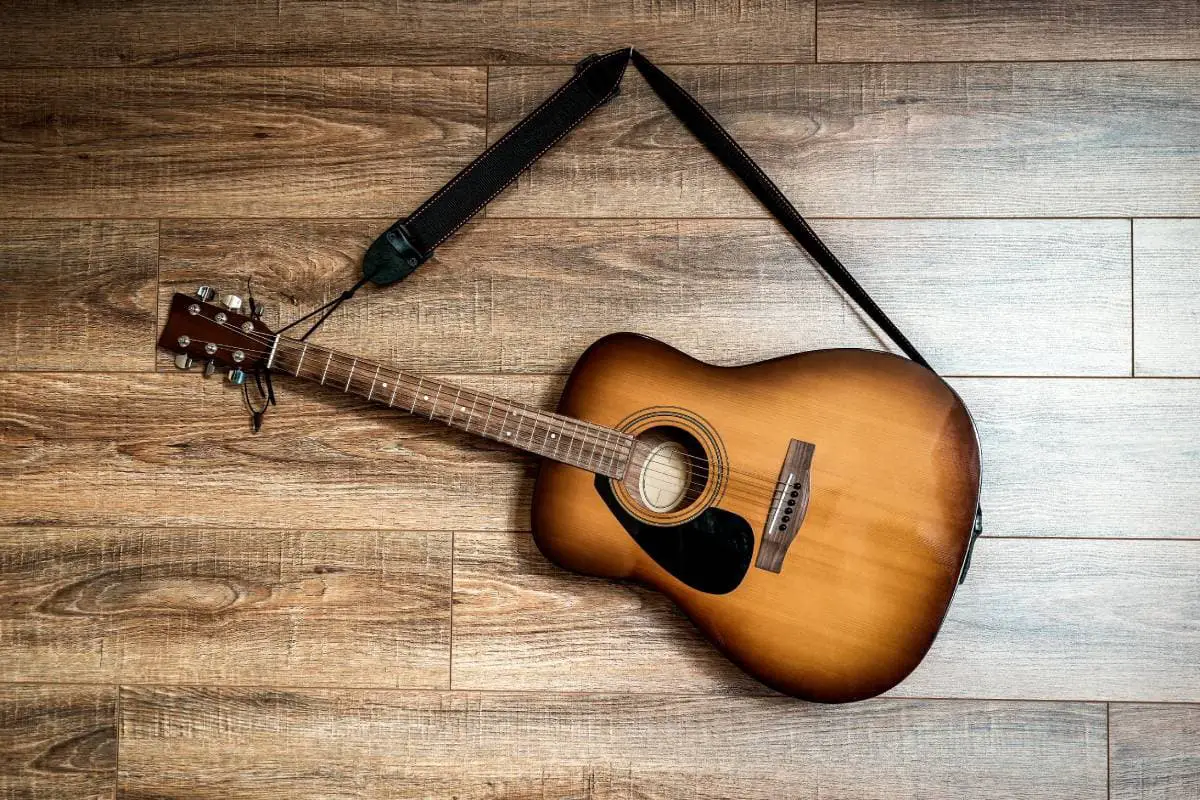The 8 ways to make an acoustic guitar sound like a bass are:
- Drop tune the guitar
- Swap the regular guitar strings for bass strings.
- Use palm muting to make your acoustic guitar sound like a bass
- Fingerstyle playing
- Slap and pop technique can create a percussive, bass-like sound.
- An octave pedal can be used to shift your guitar’s pitch down one or two octaves, creating a deep, bass-like sound.
- Use an equalizer pedal to adjust the levels of different frequencies to create a bass-like sound.
- Use an amplifier
1. Drop tune the guitar
One of the easiest ways to make your guitar sound like a bass is to drop tune it. This means lowering the pitch of your strings to create a deeper, bass-like sound.
This involves tuning your guitar’s strings down to a lower pitch. One common tuning is drop D, where you lower the pitch of the lowest string (E) down to a D. This can create a deeper, bass-like sound without requiring any additional equipment.
2. Swap the regular guitar strings for bass strings.
If you want an even deeper sound, consider swapping out your guitar’s regular strings for bass strings. Bass strings are thicker and have a lower tension, which can create a richer, more bass-like tone.
3. Use palm muting to make your acoustic guitar sound like a bass.
By resting the palm of your strumming hand on the strings near the bridge, you can create a muted, bass-like sound. This is often used in conjunction with drop tuning or bass strings to create an even deeper tone.
4. Fingerstyle playing
By using your fingers to pluck the strings instead of a pick, you can create a softer, more bass-like sound. This is often used in acoustic blues and folk music.
5. Slap and pop technique can create a percussive, bass-like sound.
This technique involves slapping the strings with your thumb and then popping them with your fingers. This creates a percussive, bass-like sound that is often used in funk and rock music.
6. An octave pedal to create a bass-like sound.
An octave pedal is a piece of equipment that can shift your guitar’s pitch down one or two octaves. This creates a deep, bass-like sound that can be adjusted to fit your playing style.
7. Use an equalizer pedal to adjust the levels of different frequencies to create a bass sound.
An equalizer pedal can be used to adjust the levels of different frequencies in your guitar’s sound. By boosting the lower frequencies, you can create a bass-like tone.
8. Use an amplifier for a bass sound for your guitar.
By using an amplifier or other sound equipment, you can enhance the low end of your guitar’s sound to create a more bass-like tone. This is often used in live performances and recording studios.
How To Make An Acoustic Guitar Sound Like A Bass FAQs
Can you turn an acoustic guitar into a bass?
While you can’t completely turn an acoustic guitar into a bass, you can use a few techniques to create a bass-like sound. These techniques include drop tuning, using bass strings, palm muting, fingerstyle playing, the slap and pop technique, octave pedals, EQ adjustments, and amplification.
By experimenting with these methods, you can create a deeper, richer sound that mimics the tone of a bass guitar. However, it’s important to note that an acoustic guitar will never fully replicate the sound and feel of a true bass guitar, which has a longer scale length, different string spacing, and thicker strings.
What happens if you put bass strings on acoustic guitar?
If you put bass strings on an acoustic guitar, you will create a deeper, richer sound that mimics the tone of a bass guitar. This can be a great way to add a new dimension to your playing and experiment with different sounds.
However, it’s important to note that bass strings are much thicker and have a higher tension than regular guitar strings. This means that they will put more stress on your guitar’s neck and body, which can cause damage or even warping over time. If you do decide to use bass strings on your acoustic guitar, be sure to have it set up and adjusted by a professional to ensure that it can handle the additional tension.
Related Posts:

